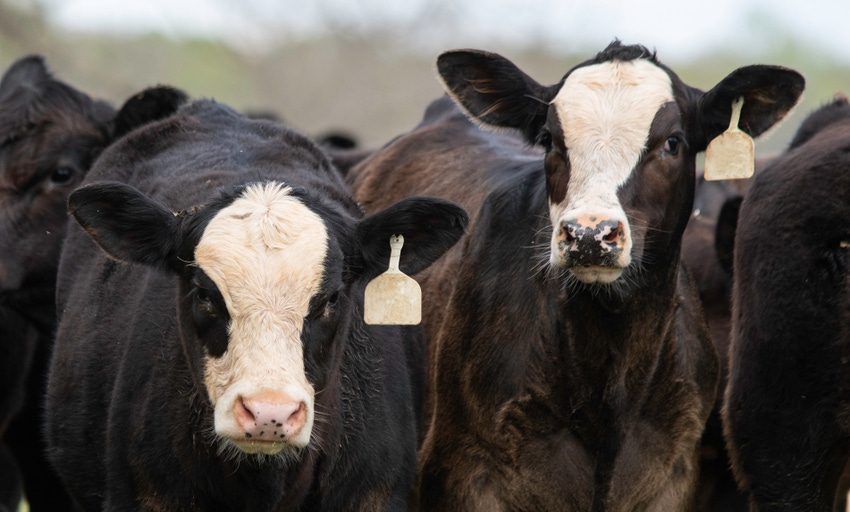Spring calf market heating up
Many markets are almost $100 per hundredweight higher than last year.
March 1, 2024

By Katelyn McCullock, Livestock Marketing Information Center
Spring is in the air and across the auction markets calf prices are starting to heat up. A quick round-up across the U.S. implies that many markets are almost $100 per hundredweight (cwt.) higher than they were last year at this time. Montana auctions are up $90 and $95 per cwt. for 400-500 weight and 500-600 weight steer calves, respectively. South Dakota is toting similar figures up $115 per cwt. from last year in 400–500-pound steer calves and $94 per cwt. for the next weight class up. Nebraska is $88 per cwt. higher in 500-600-pound steer calves and Georgia is $94 per cwt. Southern Plains auctions are showing 400-500-pound steers calling for $107 per cwt. over 2023 while 500-600-pound steers are $83 per cwt. higher. One of the few exceptions we track, although there may be others, is Washington auctions. Prices for 400-500-weight steer calves were only $4 per cwt. higher, and 500-600 weights were $32 per cwt. higher. These prices are reflecting the last week of February for these auction markets.
For many of these, auction prices ended the year slightly below the highs seen over last summer but have taken off since the beginning of 2024. We saw a similar pattern across the U.S. last year, but the rate of increase, at least for now, seems quite a bit steeper. In 2023, there was a sense of fear regarding whether there would be enough cattle for the supply chain. That drove prices through most of the first half of the year. That optimism stemmed from a break in a three year La Nina weather pattern that had put most of the U.S. cattle country in drought at one time or another during those three years. The promise of an El Nino and with it better forage production had many producers willing to pay up for cattle.
This year, supplies of cattle are even tighter with a smaller calf crop in the wings. However, there is more uncertainty regarding the weather situation. The U.S. Climate Prediction Center has been giving off a few warnings this year that the odds of returning to La Nina conditions this summer are increasing. On a climate news briefing issued February 8, 2024, the National Weather Service Climate Prediction Center estimated a 79% chance that the U.S. will transition from El Nino to ENSO-neutral by April –June 2024 and gave a 55% chance of La Nina developing in June-August 2024. Even with the development of La Nina, it does not necessarily guarantee the development of drought, but points to more likely drier weather for the Southern U.S. The good news is that an El Nino/ENSO neutral spring will likely be good news for calf prices and that a grass fever market will continue to fuel these already high prices. In the event that the U.S. remains out of drought, LMIC expects those prices to continue to build into the fall. However, the caveat is that if drought does develop in some parts of the U.S. it could slow down price increases. Tight cattle supplies should ensure that any price weakness will be small.
Current LMIC forecasts call for steers in the Southern Plains weighing 500-600 pounds will average just about $300 per cwt. on an annual basis and will likely set the high for the year in the fourth quarter. This is largely due to continued tightening expected across all parts of the cattle supply chain and the demand for fall-weaned calves to be very strong.
Next year, prices are expected to continue to increase as it seems herd rebuilding will not be able to return that quickly. Prices may average as high as the mid-$300s per cwt. reaching at times close to $400 per cwt. The weather may play a significant role, though, if La Nina returns and the U.S. reverts to intense drought patterns. Drought would likely extend the cattle liquidation phase and thereby extend higher prices for cow-calf producers for future years.
You May Also Like


.png?width=300&auto=webp&quality=80&disable=upscale)
